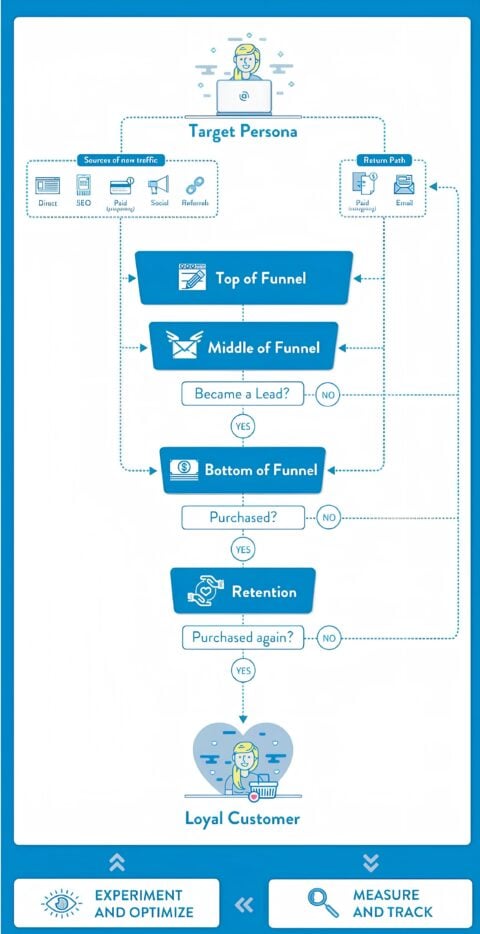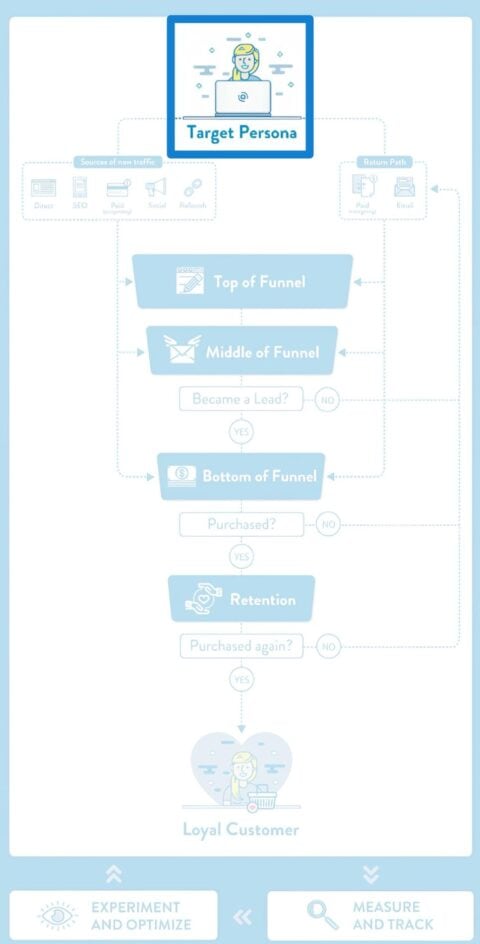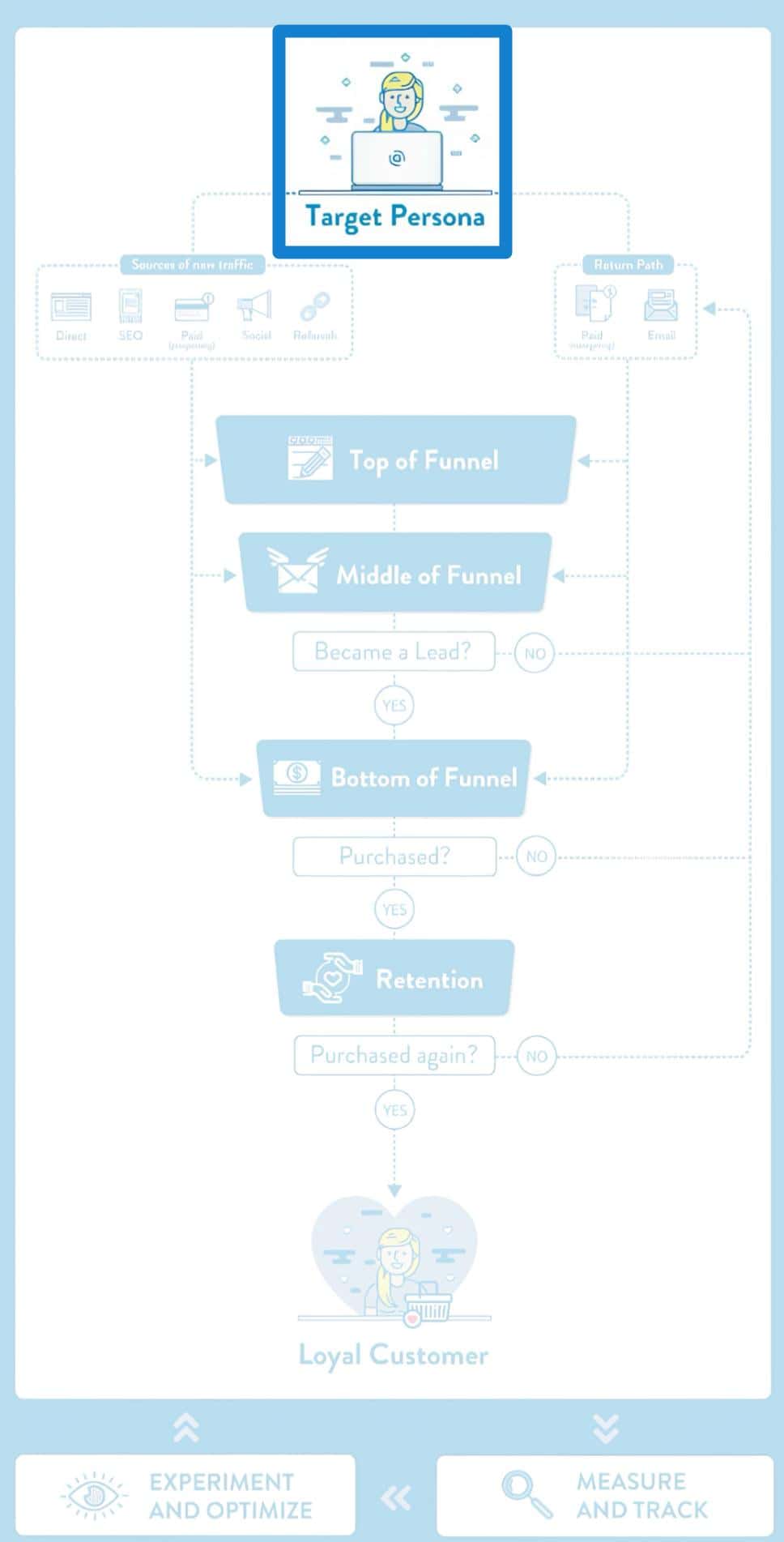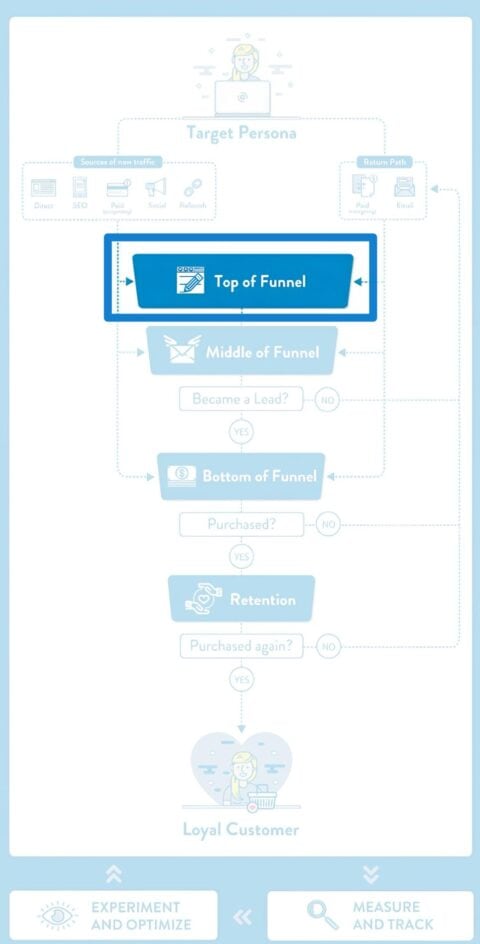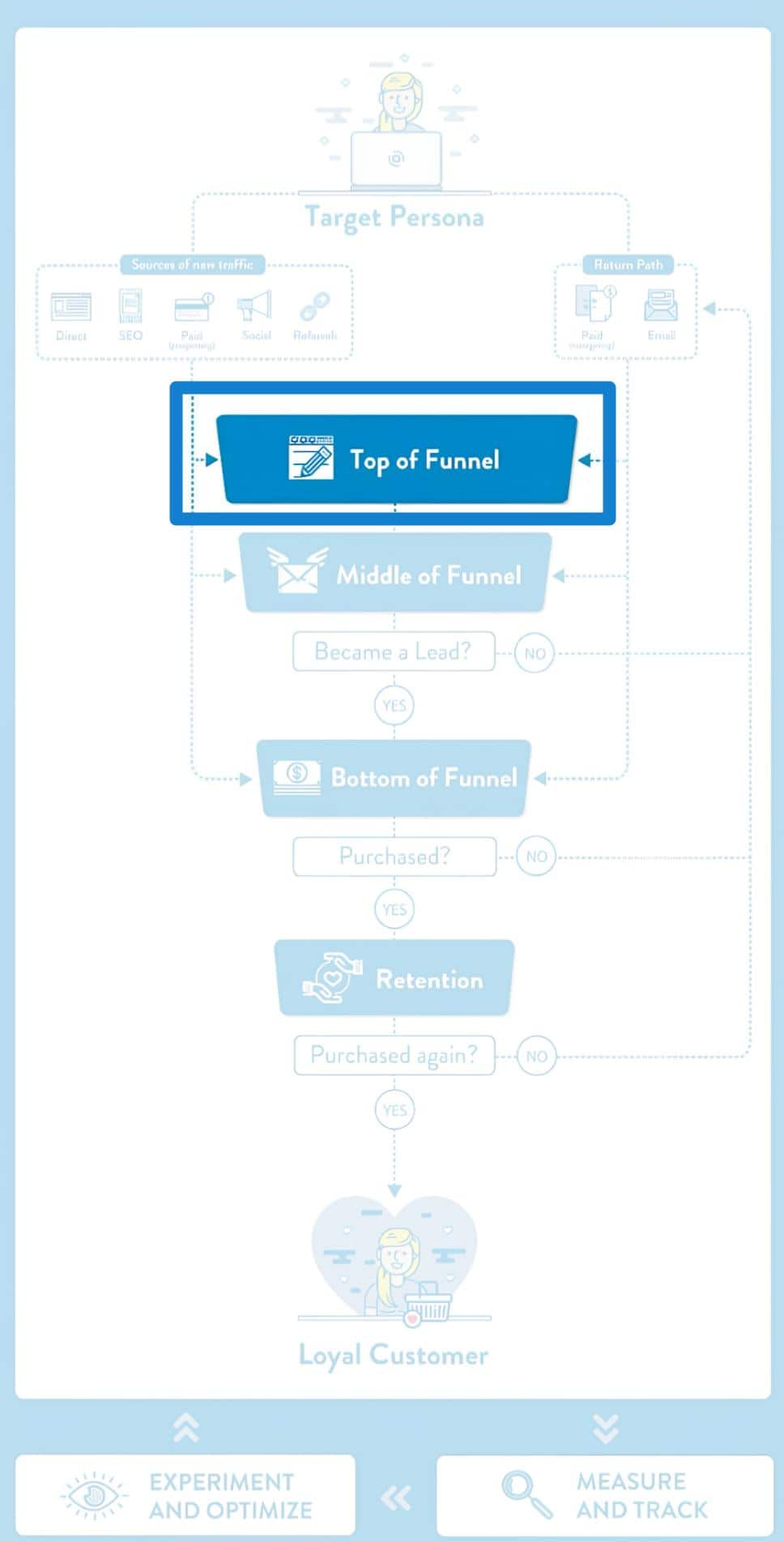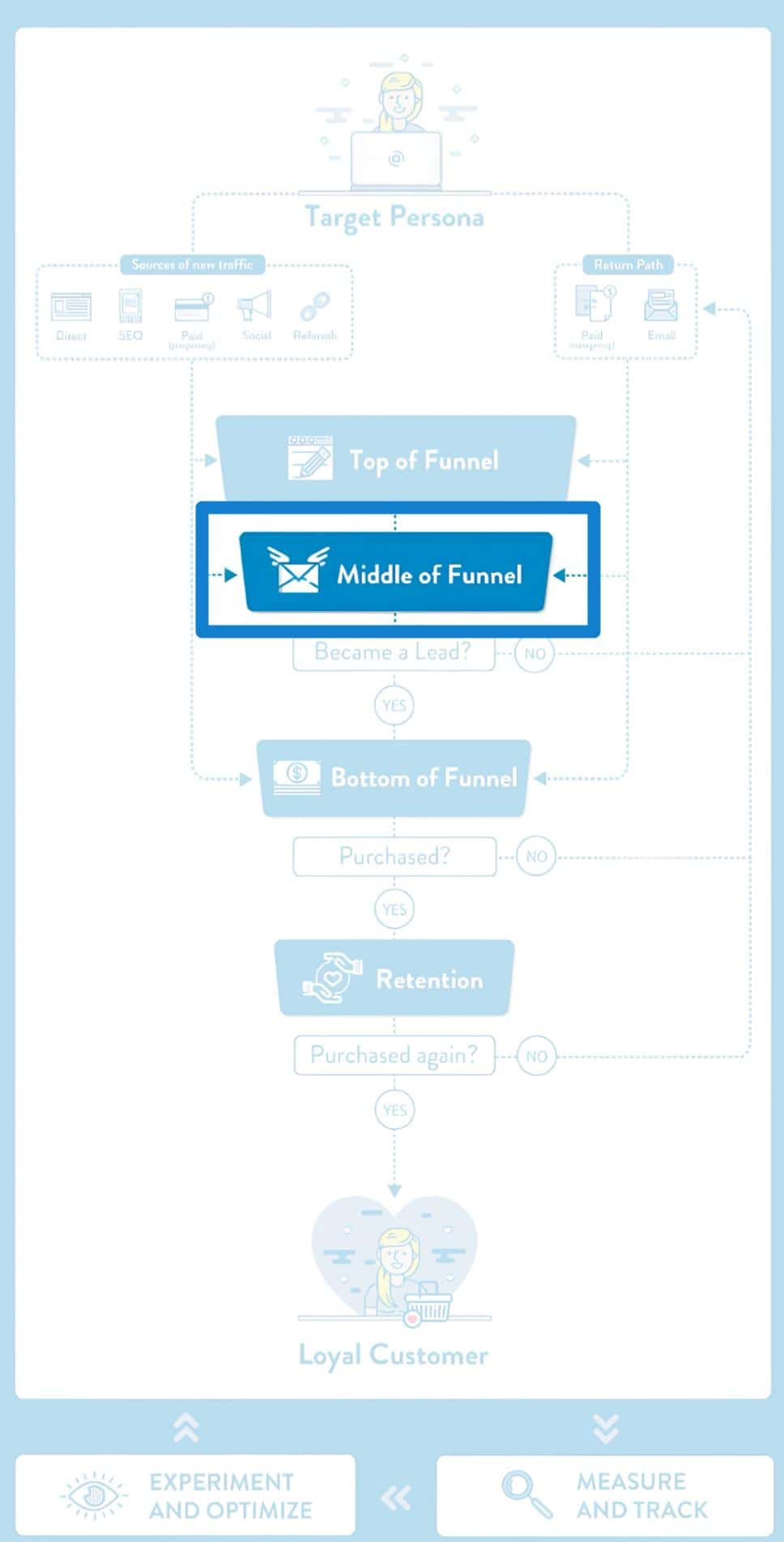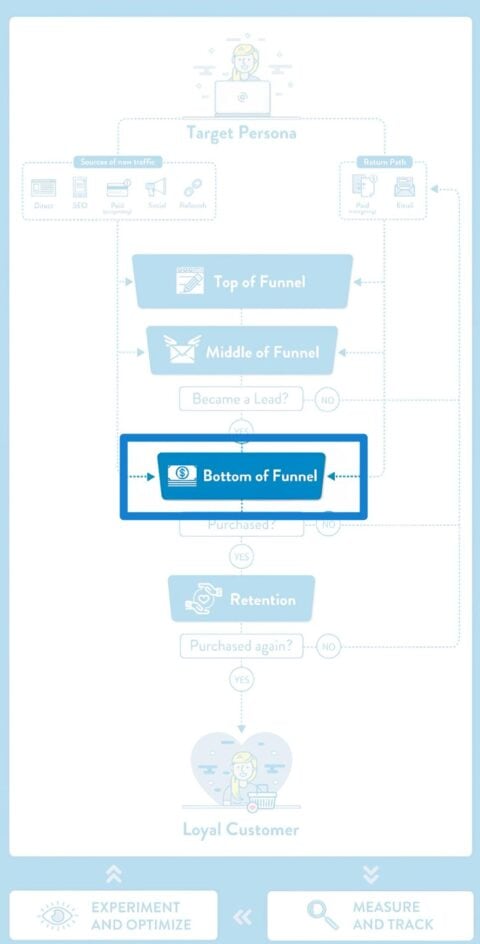📈
Your Goal at the Retention Stage: Increase Lifetime Value
In the retention stage, your marketing persona is already a customer of your product. Your objective is to increase the value you can extract from them directly by generating repeat purchases, upsells, or reducing churn; or indirectly by improving brand image or promoting referrals.
Customer lifetime value (CLV)
📝
Content Marketing
The objective of the content you'll create at the retention stage is to keep your existing customers happy by providing ongoing value (even after purchasing.)
Content ideas:
Monthly webinar: 'Managing Your Finances Year-Round: Tips for Café Success' to keep clients engaged.
Personalized financial reports: Offering insights and progress tracking relevant to their business goals.
Blog series: 'Ongoing Tax Tips for Small Business Owners' featuring continual updates on tax regulations.
Client spotlight video interviews: Sharing success stories from café owners who improved with CPA support.
Exclusive content for existing clients: E-books on optimizing tax savings with ongoing changes in legislation.
Feedback session: Hosting a live Q&A for existing clients to address their ongoing concerns and needs.
What to measure:
Engagement on monthly webinar sessions
Open rates for personalized financial reports
Feedback collected from client spotlight videos
🔎
SEO
At the bottom of the funnel, you'll want to make sure your marketing persona can find all the information she needs to get the most of your product (e.g. knowledge base articles), or to solve any problems that may arise (e.g. support/contact page.)
Keyword ideas:
client retention strategies for CPAs
best practices for small business financial management post-engagement
how to maintain tax compliance year-round
financial consulting for growing cafés
what to do after hiring a CPA
ongoing tax advice for café owners
brilliant bookkeeping tips for small business success
how to maximize savings with your CPA
success stories of CPA-client partnerships
updates on tax regulations impacting small businesses
What to measure:
Repeat organic traffic to client resources
Keyword ranking improvements on retention-related terms
Uptime on specific resource pages
🎯
Paid Advertising
At this stage of the funnel, you might choose to be run campaigns promoting of new features, upgrades, or promotions.
Target audience ideas:
[Remarketing] Facebook Ads: Target existing clients who haven't interacted with new services recently, promoting financial check-in consultations.
[Remarketing] Google Ads: Show ads that reinforce the value of CPA services tailored to returning clients with seasonal offers.
[Prospecting] LinkedIn Ads: Focus on small café owners highlighting collaboration with experienced CPAs for continuous financial success.
[Remarketing] YouTube Ads: Re-target previous webinar attendees with follow-up sessions based on their feedback.
[Prospecting] Instagram Ads: Target existing clients showcasing behind-the-scenes success stories from small businesses.
What to measure:
Click-through rate (CTR) for retention-focused ads
Cost per retained customer provoked by remarketing efforts
Conversion rates from retention advertising campaigns
📱
Social Media
Retention campaigns on social media revolve around building a sense of community with your existing customers. You'll do a lot of monitoring of brand mentions on social media.
Social media campaign ideas:
Create a monthly client appreciation post celebrating their successes and encouraging user-generated content.
Run polls asking about common challenges clients face, inviting them to share their thoughts or suggest topics for future webinars.
Develop a series of infographics on financial health metrics specifically for small cafés, sharing tips via social media.
Engage with comments on client posts addressing feedback directly and reinforcing trust.
Monitor brand mentions on social platforms and provide timely responses or solutions to enhance client relationships.
What to measure:
Engagement metrics on appreciation posts
Feedback collected from polls
Referral activity and mentions of the brand online
📧
Email Marketing
Retention email campaigns will be a mix of educational emails (onboarding, activation, etc), transactional emails (reports, receipts, reminders, etc), and promotional emails (upgrades, upsells, etc.)
Email marketing campaign ideas:
Monthly performance update email, summarizing key financial achievements and goals reached.
Special promotions aimed at loyal customers to book additional services with discounts.
Feedback request emails following consultation calls to gather insights on customer satisfaction.
Newsletters featuring ongoing tax updates, financial tips, and exclusive client-only content to strengthen engagement.
Re-activation emails targeting clients who haven't scheduled a consultation recently, including testimonials of recent success stories.
What to measure:
Open rates for monthly performance updates
Response rates on feedback requests
Engagement with re-activation emails
🧪
Marketing Experiments
Your retention experiments will have the objective of maximizing lifetime value of existing customers.
Experiment ideas:
Test varying formats of client reports to see which resonates best and drives continued engagement levels.
A/B test incentives offered in follow-up emails to encourage referrals and new client acquisition from existing ones.
Evaluate landing page content for client referrals to ensure clarity and effectiveness in prompting action.
Experiment with different webinar themes and timings to determine what works best for client engagement.
Conduct usability tests on client portal features to improve customer satisfaction and make access to information easier.
What to measure:
Client engagement metrics post-content formats
Conversion rates from referral programs
User satisfaction scores related to client portal experiences

